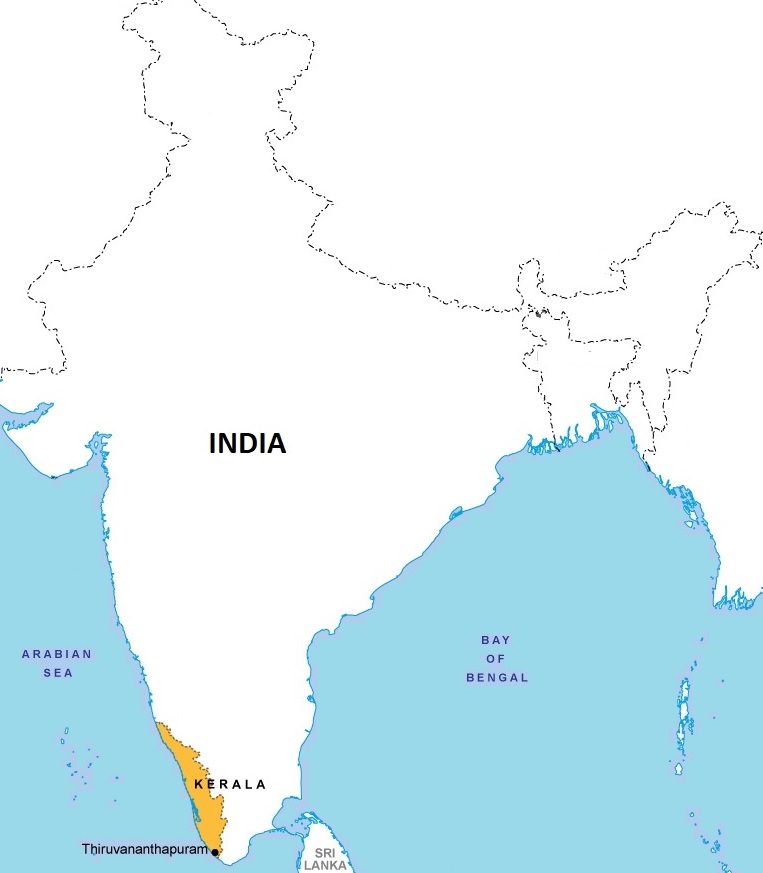
The Kerala State’s Economic Review 2020 blandly claims that the State’s development outcomes are comparable with the most developed countries. Is this true? Has Kerala’s progress in economic indicators since independence been superior to that of other States? To what extent are the State’s historical, geographical, social, and cultural factors responsible for its superior outcomes? Didn’t countries and regions with similar characteristics have similar and perhaps better outcomes? We examine these questions and are led to conclude that the ‘Kerala Model’ is less a model and more an experience.
Rev. Caldwell and Sir Northcote
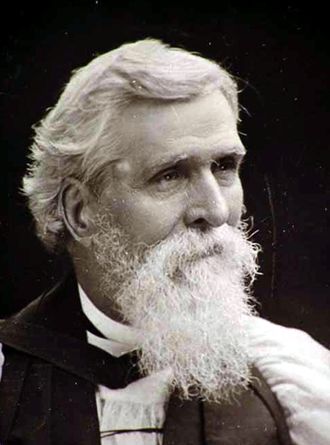
Rev. Robert Caldwell (1814 – 1891) was a 19th-century Tamil scholar and a Scottish-Presbyterian missionary of the London Missionary Society. He was at one time Bishop of Tirunelveli. Having learnt the local language for spreading the Gospel, Caldwell became an authority on Dravidian languages and comparative grammar. Caldwell wrote the classic “A Comparative Grammar of the Dravidian or South-Indian Family of Languages” in 1856. Caldwell famously suggested that there were Dravidian words in the Hebrew text of the Old Testament and place names mentioned by Ptolemy.
A prolific writer with eclectic tastes, Caldwell wrote in The Chutney Lyrics (1871), a collection of light-hearted poems, as follows:
The Protected State of Cocoanutcore?
The Chutney Lyrics, 1871
Is a very wonderful State indeed; –
A “Model State,” in which you may see
Everything is just as it should be.
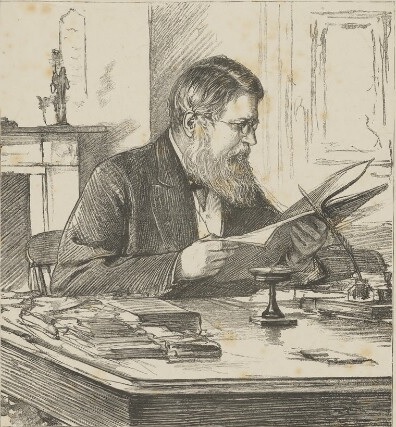
Caldwell was writing of Travancore, now in Kerala. As son-in-law of Rev. Charles Mault who had spent the last 35 years of his life in Travancore, Caldwell knew a thing or two about the State. The verse was apparently provoked by Sir Stafford Northcote, Secretary of State for India and later Chancellor of the Exchequer. Northcote told the House of Commons on 24 May 1867 that “Travancore forty years ago was in as bad a state as Mysore, yet its administration … had so greatly improved that Travancore was now something like a model Native State”. The context was the future of Mysore where the Maharajah was ailing. He was arguing for the subsidiary alliance model, “Native Government supervised by Europeans,” as against annexation and direct British rule.
A Model is Born
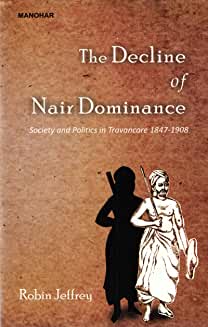
Robin Jeffrey used Caldwell’s verse as an epigraph in his seminal The Decline of Nayar Dominance, reprinted as The Decline of Nair Dominance (1976). By then, the Centre for Development Studies (CDS), established a few years earlier, had organised a UN-CDS Conference. At the Conference, Kerala’s development and superior outcomes received academic attention. Citing these conference papers, Ratcliffe (1978) wrote that Kerala
“has become the most socially developed state in all India. Its people are better educated, healthier, live longer, enjoy higher wages, are more secure in their jobs and personal lives – and have fewer children – than any others in India. In short, the quality of life has improved substantially for the broad majority – the espoused objective of all development plans. And because this objective has been achieved, Kerala’s social, economic, and political problems, while not fully resolved, seem more amenable to solution, particularly when viewed in the broader all-India perspective.”
Morris D. Morris, in his Measuring the Conditions of the World’s Poor: The Physical Quality of Life Index (1979), developed the Physical Quality of Life Index (PQLI), summarising infant mortality, life expectancy, and basic literacy. He compared the PQLI of several countries and Kerala, the only non-country in the study. No wonder then that even today many in Kerala like to compare the State with the rest of India and other countries as if it were a separate country on its own. Writers of assorted descriptions, including development economists, started using the term Kerala Model to describe the paradox of high globally comparable PQLI but with low-income levels. So did the media, and it caught on.
God’s Own Country
When Jeffrey followed up in 1992 with Politics, Women and Well-Being – How Kerala Became ‘a Model,’ he was using a term that had by then become popular, perhaps oblivious that he might have started it all. Jeffrey outlined the process as follows:
“More babies survived, people lived longer yet had fewer children – and it all happened without the chaotic violence of a political revolution or the environmental degradation of an industrial one. As a critic wrote, this interpretation allowed those so inclined to ‘have their cake and eat it too’. They could point to a model of development that neither required ‘large transfers of funds from the wealthier countries’ nor ‘rock[ed] the boat’. Thus Kerala’s experience, appealing to a wide variety of political beliefs and prejudices, began to feature regularly in writing on population and development.”
Jeffrey, Politics, Women and Well-Being – How Kerala Became ‘a Model’, p. 7
Malayalis welcomed the transformation of ‘Model state’ into a ‘Kerala model.’ As the adjective became a noun, how it translates into policy options- what were the inputs in the model – remained a grey area, barring hazy notions of focus on health and education. It provided all-around cheer and content as long as the outcomes were happy, like manna from heaven. The State’s hugely popular tourism promotion tagline, ‘God’s own country,’ a step away, was also anticipated by Caldwell:
A land of peace, a land of delight,
Where everyone, everywhere, always does right.
…
In short, and I’m sure I cannot say more,
’Tis a heaven upon earth, this Cocoanutcore!”
The many suitors of the Kerala Model
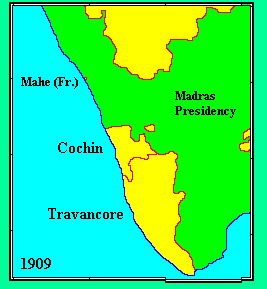
Widely admired outcomes could have many claimants. The ‘Kerala Model’ is no exception. The dominant narrative is that the story begins in 1956 when Kerala was formed. It merged the Malabar District of Madras State with Travancore-Cochin minus the latter’s Kanyakumari District. Travancore-Cochin was formed in 1949 by merging the two states after they acceded to the Indian Union. A year after Kerala was born, the first elected communist government in the world, came to power in 1957.
While suggesting that the ‘Kerala Model’ resulted from the State’s left politics, Ratcliffe strengthened it stating that the change came “unexpectedly, and within just a few years.” He added that “Many facets of Kerala’s social, political, and economic context today are the legacy of a powerful Communist influence on the state.” No doubt, the land reforms of the late 1950s played a significant role. But, this narrative masks many stories within. Moreover, the excessive focus on the Kerala Model has also had its weaknesses and unforeseen outcomes. One can unravel and approach the realities through a few questions, at different levels and layers.
The Group in Morris’s Study
Even in Morris’s analysis, the State narrowly joined a category of those with low incomes. Even here the State was at the bottom. The essence of the Kerala Model was this achievement of globally comparable development indicators with very low-income levels. This ‘model-ness’ was not unique to Kerala even as per Morris. Also in his analysis, a notch above Kerala, were Sri Lanka, Cuba, Grenada, Guyana, Republic of Korea, and Western Samoa. This group had a per capita income below USD 700, but a PQLI of 77 or more in the 1970s. Countries that were on the list in earlier years but improved their income levels were Hong Kong, Costa Rica, and Taiwan.
Kerala’s group had per capita income below USD 700, and PQLI in the 68-76 group. Kerala was lowest in this group with per capita income and PQLI at USD 126 and 68. The others in the group were Albania, China, Colombia, Ecuador, Mauritius, Paraguay, the Philippines, and Thailand. All these had per capita incomes of nearly three times and higher than that of Kerala, the highest being 552. Only Ecuador and Thailand had PQLI equal to Kerala. China at 69 was a shade better. Thus, the results were more dramatic in these other countries. It was more so in Sri Lanka, which shares many cultural, geographical, and social characteristics with Kerala.
Unit of analysis
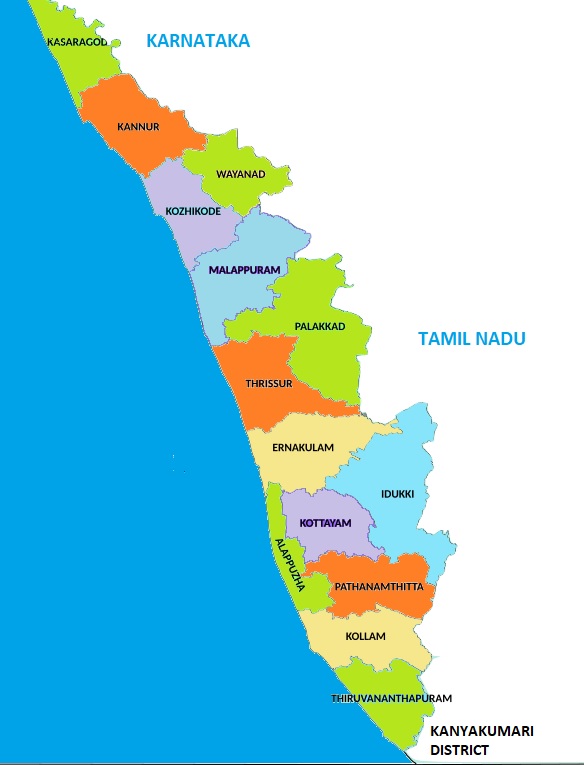
The state is not an appropriate unit of analysis when historical factors are significant. This is a major flaw in Morris’s analysis and others who followed him. As the Kerala State is a recent geographical formation, focusing on a Kerala model forecloses a discussion on its historical antecedents. It also conceals the discrepancies within the State, between Travancore, Cochin, and Malabar. This would have suited its early leaders, many of whom came from Malabar, the less developed part even today. It also ignores Kanyakumari District, once in Travancore, which tops in Human Development Index among Tamil Nadu districts besting the next best Virudhunagar by a wide margin.
Historical factors
The historical advantages need further elaboration. As Caldwell continued:
Where dwells a worthy and well-oil’d nation,
Blest with a faultless administration;
The brightest land, with the lightest tax,
And an annual surplus of fifty lacs:
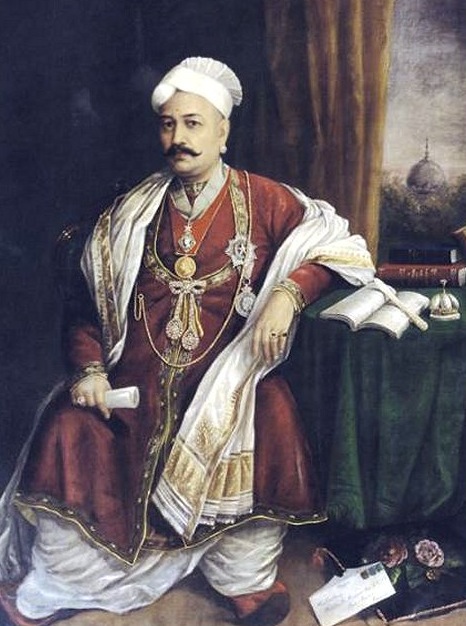
Caldwell was referring to the administration of T. Madhava Rao. One of the ablest Dewans of Travancore, his statue outside the secretariat lends its name to Trivandrum’s main Statue Junction.
The development indicators of Kerala were already the best in India at independence. That includes female literacy, four times the national level. In 1900, Travancore was best in literacy, female education, infant mortality, birth rate, and death rate. And Malabar, though far behind Travancore, was among the best districts of the Madras Presidency.
The historical advantages of Travancore are carried forward even today. In 2018-19, the top seven districts (out of 14) for per capita income are from Travancore. Six of the last seven are from Malabar. Thus, composite Kerala’s head start in development was due to erstwhile Travancore, and to a lesser extent, Kochi, and Malabar.
Morris acknowledged the role of the past when he wrote that “they did not achieve these results as quickly as may seem to be the case. Prolonged periods of various kinds of institution-building seem to have preceded.” It was, of course, not his objective to elaborate.
If history played a role in Travancore already being the best in the country in 1900, the progressive rulers and Dewans of the day, missionaries who leveraged land and grants from the administration to further literacy, and social reformers who benefited from the State’s education, played their role. It would be unfair to glorify the contribution of any one of these and belittle the others.
Rural-urban continuum
But, it will be worth recounting some of the administrative initiatives. The conscious policy of the geographical spread of schools and hospitals in Travancore fostered a more literate and healthy populace. It also minimised urban-rural disparities and made rural-urban migration less attractive. The effects of these are still visible. The state has a rural-urban continuum where it is difficult to pin where the urban ends and the rural starts. I will keep the details of this part for a future post.
Social and cultural factors
Caldwell’s words, well-oil’d nation, draws attention to social and cultural factors. Ratcliffe had discounted these factors as he confined his discussion on cultural factors to religion. Apart from these, aren’t geographical factors also important? The abundance of water supports a more hygienic lifestyle. Not to forget the tradition of Ayurveda and traditional systems of medicine. The traditional matrilineal system, associated with the Nair community, but which also existed among the Ezhavas and sections of Muslims, encouraged female education. That probably explains why Morris’s study found Sri Lanka and Maldives, which shares these characteristics, in a higher category than Kerala.
Kerala Model and Goodhart’s Law
The development numbers seem to be affected by Goodhart’s Law, where a measure ceases to be a useful policy variable when it becomes a target? Excess focus on certain measures finally results in their being compromised. Thus, there are indicators that literacy rate and infant mortality rate, among others, have been compromised.
To cite an example, the test of literacy in the early decades of the 20th century was the ability to write a letter and understand the reply. In subsequent decades, this was watered down to mere writing of one’s name in the vernacular. Till 1971, literacy was calculated for age five and above. From 1981, it was assessed for age seven and above, giving an upward bias to the numbers.
One-upmanship and inter-district rivalry, with certain districts getting identified with certain communities, seem to have affected the integrity of the data. There have also been studies that pricked holes in claims of ever-lowering infant mortality (death per 1000 of infants more than seven days old) when stillbirth rates (infants seven or fewer days old) remained unusually high (Irudaya Rajan and Mohanachandran, EPW, 1999). These suggest a need to have a relook at the sampling design used for arriving at the State’s development numbers.
I will leave a longer discussion on this issue for another date. But, I can only speculate whether the infirmities in these numbers across the world was why the UNDP dropped literacy and infant mortality rates from its HDI calculations about a decade back. The stress is more on years of education rather than a subjective assessment of literacy. The UNDP definition of HDI has moved on from literacy rate, and infant mortality, to include the length of education, and per capita income.
Kerala Model and the Left
The State’s left parties never had a minister in charge of Education or Health until as late as 2006. An exception was in 1978-79, in the short-lived Ministry of P.K. Vasudevan Nair from the Communist Party of India which lasted just one year. It had two ministers from his party holding charge of health, the first for just 20 days. Despite being in the dominant position in different coalitions, not having direct control of these ministries indicates the low priority they gave to health and education during the period.
Is the Kerala Model a Paradox?
Finally, was there really a paradox as assumed in the Kerala Model? The per capita income seemed to have been grossly understated in those days when the rich contribution of homestead farming did not enter the state GDP figures. Also pushing up HDI as per consumption, as against income, was the effect of migration to the Gulf and elsewhere creating a ‘money order economy.’
Kerala Model Now
The State Economic Review 2020 reflects this disconnect with realities when it stated that as far as “Human development index is concerned, the State’s performance is comparable to the developed countries of the world.” Really? The reality is that to find a country matching Kerala’s life expectancy one has to go down to around number 50 in the list of UNDP rankings. Even Sri Lanka and the Maldives are better in infant mortality.
Kerala’s HDI is still the highest in India at .782, similar to Sri Lanka, which is ranked 72 out of 189 countries. Thirteen other states/Union Territories are in the same category of high HDI of above .7 in HDI. All states have improved considerably after independence. Thus, it seems that Kerala’s continuance at No 1 is more due to the failure of other states to close in on Kerala’s historical lead rather than the latter’s performance post-independence.
In 2011, UNDP ranked Kerala among countries with medium HDI, below Botswana at 98 and above Moldova, Mongolia, and Egypt ranking 99 to 101. Nine other Indian states also had HDI comparable to other medium-HDI countries. These were Punjab, Himachal Pradesh, Haryana, Tamil Nadu, Uttarakhand, Gujarat, West Bengal, and Karnataka.
Looking at alternative indices, Kerala does not figure in the list of top 10 cities or municipalities in the Ease of Living Index, either in the above or below one million population categories.
Consequences of the Kerala Model
It is this author’s perception that an excessive focus on the Kerala Model led to a “we-have-arrived” syndrome. The State feels that it need not do anything spectacular, to promote industry or employment, as long as the moolah and accolades keep pouring in. Enjoying the benefits of prosperity without being prosperous, or even trying to be, is like having the cake and eating it too. A get-rich-quick culture permeates the society manifesting in pernicious practices such as nokkukooli (literally, wages for looking, as others do the work), quotation gangs, and land mafia operations. A related state-jingoism is visible on social media and writings from the State. Grabbing credit for these superior, but shallow, outcomes are perhaps at the root of many an inter-community rivalry. It also perhaps reduced political commitment and responsibility.
New Challenges
The smugness and self-congratulation are perhaps most evident in both education and health. The best of students have to look outside the State or abroad for quality education. The challenges are more in the health sector. Dr V. Ramankutty, a medical professional and health economist, and son of C. Achutha Menon, the erudite and most respected former Chief Minister of the State, listed lifestyle diseases, high level of morbidity, and low birth weight, among new challenges. According to him, declining government investment in health means less qualified doctors and antiquated and faulty medical equipment. The consequent slippage of public health into the clutches of the private sector, including super speciality hospitals, has escalated medical costs, marginalising disadvantaged sections.
Add to these, other issues such as high per capita consumption of liquor, high suicide rate, irreversible damage to the environment, recurring floods, marginalisation of the tribal community, and bleak industrial growth scenario. There are also symptoms of latent extremism which could rear its head anytime.
Dark days lie ahead for the Kerala Model. Mitigating factors like gulf remittances are drying up. Tourism, a mainstay, might take time to revive after the pandemic. As against the annual surplus of 50 lakh in Caldwell’s verse, the per capita debt of the Kerala State today is over one lakh rupees and counting.
Having remained at number one for long, the State should challenge itself with new goals and focus on new goals. This could include the following ten Cs of citizen living experience:
- Capability (health, education),
- Care (women, children, elderly, other disadvantaged),
- Comfort (roads, transport, water, electricity, waste disposal, and other infrastructure),
- Corruption (grand corruption and white collar),
- Crimes against women, children, elderly, and other disadvantaged,
- Citizen safety,
- Cost of living,
- Cleanliness,
- Care for environment, and
- Communal harmony.
Conclusions
The Kerala model is more an experience than a model. A model cannot be defined by mere outcomes with little insight into its inputs. An honest introspection would reveal that the progress made by the State from where it was at independence is less than what other states achieved after independence.
While Caldwell’s reference to the “model state” has endured, what is lesser known is that his verse was a satirical take on injustice in the Travancore administration. The poem, “The Good Sir Gammon Row,” was about grave injustice to a fellow white man for which he did not get justice from the Dewan. The reference in “Gammon”, a pejorative with multiple references including a pig, hoax or humbug, could be to Sir T. Madhava Rao (perhaps unjustifiedly), the Dewan of Travancore in Caldwell’s time, referred to earlier. Madhava Rao is one of only two Dewans of Travancore with their statue in Trivandrum.
Jeffrey did a disservice quoting Caldwell out of context. Jeffrey’s extract ended thus:
Where whitemen, living in meek minority,
Acknowledge Brahminical superiority.
In short, and I’m sure I cannot say more,
’Tis a heaven upon earth, this Cocoanutcore!”
But, the sting is in the last few lines of Caldwell’s long poem, where he drew the moral as follows:
A MORAL let us, like a foolscap, draw
O’er the bald grand head of ancient Law :
It is this : — All truth , all justice is fudge
When a Brahmin is judged by a Brahmin Judge !
The Royalty has since moved on. So have their Dewans. Not to forget the British and their Residents. The Brahmins ceased to be dominant decades back. And so did the Nairs, much earlier, as Jeffrey chronicled. There are new laws, new ruling classes, new crimes, and new injustices. The sarcasm remains.
© G. Sreekumar 2022.
For periodical updates on all my blog posts, subscribe for free at the link below:
https://gsreekumar.substack.com/
![]()
Congratulations, Sreekumar !
This article is cogent, thoroughgoing and erudite.
It will stand me in good stead for my BHARANACHAKRAM episodes.
Thanks,
James K Joseph,
Former Accountant General.
Thank you. Happy to hear.
Absolutely agree with your article Sreekumar.. Maybe it’s high time we start calling it the Travancore Model?
Thank you Meena.
Very interesting perspectives, that challenge – with facts, figures and citations – established understanding of the “Kerala Model”…
Thank you Vijayakrishnan.